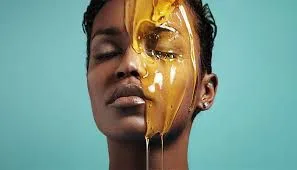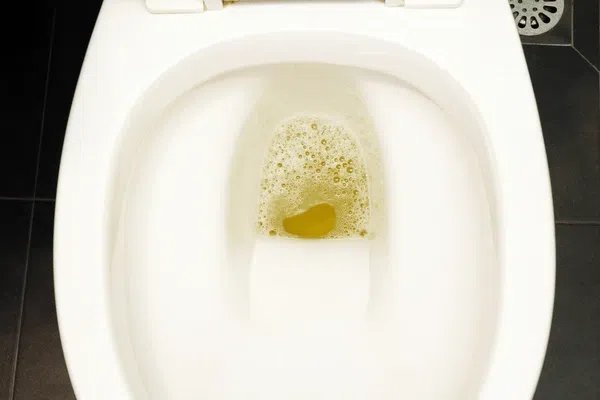Lifestyle
5 easy ways to use honey for soft and clear skin

5 easy ways to – Everyone dreams of having…
Everyone dreams of having soft, glowing, and clear skin, but with so many products out there, it’s easy to feel overwhelmed.
If you’re tired of trying expensive skincare products that don’t work, why not turn to a natural remedy that’s been trusted for centuries?
Honey is packed with antioxidants, antibacterial properties, and natural moisture that can transform your skin in ways you’ll love.
Here are some tips that are simple enough for anyone to try at home, so you can start glowing from the inside out.
1. Honey as a natural cleanser
Honey can gently cleanse your skin without stripping it of its natural oils. All you need to do is take a teaspoon of raw honey and massage it onto your damp face in circular motions. Let it sit for about 5 minutes before rinsing it off with warm water. Your skin will feel soft, clean, and hydrated. This method is great for people with sensitive or dry skin.
2. Honey and lemon face mask
For bright and clear skin, mix one tablespoon of honey with a teaspoon of freshly squeezed lemon juice. Apply this mixture to your face and leave it on for 10-15 minutes before rinsing with lukewarm water. Lemon helps lighten dark spots, while honey soothes and moisturises your skin. However, if you have very sensitive skin, skip the lemon as it can be too harsh.
3. Honey and sugar scrub
Exfoliation is key to glowing skin, and honey makes it gentle yet effective. Mix one tablespoon of honey with one teaspoon of sugar to create a natural scrub. Rub the mixture onto your skin in small circular motions to remove dead skin cells and reveal fresh, smooth skin underneath. Use this scrub once or twice a week for the best results.
4. Honey and aloe vera gel
If you suffer from redness or irritation, combining honey with aloe vera gel can work wonders. Mix equal parts of raw honey and aloe vera gel, then apply the mixture to your face like a mask. Leave it on for about 20 minutes and rinse it off with cool water. This soothing combo helps calm inflamed skin and adds a healthy glow.
5. Honey spot treatment for pimples
 Join Our WhatsApp Group
Join Our WhatsApp GroupDon’t miss out on any real-time information. Join our WhatsApp group to stay updated.

Honey’s antibacterial properties make it an excellent spot treatment for acne. Dab a small amount of raw honey directly onto a pimple and leave it on for 15-20 minutes. Rinse it off with warm water. This natural remedy can reduce inflammation and help the pimple heal faster without drying out your skin.
ALSO READ: 7 overnight beauty tips with honey
Turo247News is on WhatsApp!
CLICK HERE TO JOINShare News with us via Email: turo247newz.com@gmail.com
Join Our Social Media Channels- WhatsApp: Turo247 News Room
- Facebook: Turo247newz
- Twitter: @turo247newz
- Instagram: @turo247newz
- Tiktok: Turo247newz
Lifestyle
Why is my urine foamy?

Have you ever looked into the toilet and noticed that your urine appears foamy or bubbly?
While it might not seem like a big deal at first, foamy urine can sometimes be a sign of an underlying health issue. In this article, we’ll explore what causes foamy urine, when it’s considered normal, when it might signal a medical condition, and what treatments or steps you should take if it persists.
ALSO READ: Having trouble urinating? It could be a sign of prostate cancer
What Does Foamy Urine Mean?
Foamy urine simply means urine that looks bubbly or sudsy, almost like soap has been mixed in. It’s often noticed when using the toilet and can appear occasionally or frequently.
Common Causes of Foamy Urine
1. Fast Urination
One of the most common reasons for foamy urine is urinating with a strong stream. This can cause bubbles to form in the toilet bowl due to the force of the flow.
2. Dehydration
When you’re not drinking enough water, your urine becomes more concentrated. This concentrated urine may appear darker and foamy than usual.
3. Presence of Protein (Proteinuria)
Persistent foamy urine could indicate protein in the urine, a condition known as proteinuria. This is often a sign that your kidneys are not filtering properly.
Common causes of proteinuria include:
Kidney disease
Diabetes
High blood pressure
Autoimmune conditions like lupus
4. Urinary Tract Infections (UTIs)
Some UTIs can cause changes in the appearance of urine, including cloudiness or foaminess, often accompanied by a strong odor or burning sensation during urination.
 Join Our WhatsApp Group
Join Our WhatsApp GroupDon’t miss out on any real-time information. Join our WhatsApp group to stay updated.
5. Retrograde Ejaculation (in men)
In some men, a condition called retrograde ejaculation causes semen to travel backward into the bladder instead of out through the penis. This may cause the urine to appear foamy.
ALSO READ: 5 Nigerian soups that are good for your kidney
6. Chemicals in the Toilet
Sometimes, foam may simply be due to residues from cleaning products in the toilet bowl interacting with your urine.
Health-Related Causes of Foamy Urine
If your foamy urine is persistent and accompanied by other symptoms, it could be a sign of a serious health condition, including:
Chronic Kidney Disease (CKD): Kidney damage causes protein to leak into the urine. This is a major warning sign and should be evaluated immediately.
Diabetes: Diabetes can damage blood vessels in the kidneys, leading to protein leakage and foaminess in urine.
High Blood Pressure: Over time, hypertension can harm kidney function, increasing the risk of proteinuria and foamy urine.
When to See a Doctor
You should consult a healthcare professional if:
The foamy urine persists for more than a few days
You notice swelling in your hands, feet, face, or abdomen
You have frequent urination, especially at night
Your urine is dark, has a foul odour, or appears cloudy
You’re experiencing other symptoms like fatigue, nausea, or shortness of breath
To determine the cause, your doctor may recommend:
Urinalysis to check for protein, blood, or infection
Blood tests to assess kidney function
Imaging tests (like an ultrasound) to check the kidney structure
24-hour urine collection for accurate protein measurement
Treatment depends on the underlying cause:
Dehydration – Drink more water and stay hydrated
Proteinuria/Kidney disease – Medications like ACE inhibitors or ARBS, lifestyle changes, manage diabetes or BP
UTI – Antibiotics prescribed by a doctor
Retrograde ejaculation – May be treated with medications or fertility support if needed
Diabetes/Hypertension – Manage with proper medication, diet, and exercise.
While occasional foamy urine may not be a cause for concern, persistent or frequent foaming, especially when paired with other symptoms, could point to an underlying health condition. It’s always better to check with your doctor if you’re unsure. Early detection and management can prevent serious complications, especially when it comes to kidney health.
ALSO READ: 12 vegetables you should eat everyday
Turo247News is on WhatsApp!
CLICK HERE TO JOINShare News with us via Email: turo247newz.com@gmail.com
Join Our Social Media Channels- WhatsApp: Turo247 News Room
- Facebook: Turo247newz
- Twitter: @turo247newz
- Instagram: @turo247newz
- Tiktok: Turo247newz
Lifestyle
What happens when the Pope dies?

On April 21, the world woke up to news of the death of Pope Francis. The death was announced by the Vatican who said he died at the age of 88. Pope Francis was the first Latin American leader of the Roman Catholic Church.
He suffered various ailments in his 13-year reign, with severe complications in recent weeks. With his death, here is a look at what usually happens when the Pope dies.
Official declaration
Upon the pope’s death, the Camerlengo (Chamberlain) is responsible for confirming the passing. In the past, this involved calling the pope’s name three times; however, this practice has been discontinued, and medical confirmation is now standard. The Camerlengo then locks and seals the papal apartments and destroys the official seal and ring of the Pope to prevent its misuse, symbolizing the end of the pope’s authority.
READ ALSO: Pope Francis, a Janitor who turned Pope, dies at 88 — A look at his life, legacy and impact on Nigerian Catholics
Nine-Day mourning period (Novendiale)
After the Pope’s death is confirmed, the Church officially enters a nine-day mourning period known as the Novendiale. During this time, the pope’s body lies in state at St. Peter’s Basilica, allowing the faithful to pay their respects. Each day during the mourning period, an honorary Mass is celebrated for the deceased pope in Rome, led by a different cardinal every day.
Sede Vacante
Next, the Church enters a period known as sede vacante (“the seat is vacant”). During this time, a senior cardinal takes over day-to-day affairs until a new pope is elected. It is said that in this case, this will be Irish-American Kevin Farell and he will be in charge of overseeing the administration of the Church, though no significant decisions are made until a new pope is elected. The Camerlengo assumes administrative duties, ensuring the continuity of the Church’s operations.
Funeral
For the Pope’s funeral, cardinals from around the world are expected to hold a series of meetings known as “general congregations”. This is when they will decide a date for his burial. The date has to be between the fourth and sixth day after the Pope’s death. While Pope Francis’s immediate predecessors were buried in St Peter’s Basilica in the Vatican, his burial will be different. Before his death, Pope Francis requested a simpler funeral with a wooden and zinc coffin and burial at Santa Maria Maggiore Basilica in Rome, rather than the traditional Vatican Grottoes.
READ ALSO: How is a new pope elected? Everything you should know [Pulse Explainer]
The Conclave
Between 15 and 20 days after the pope’s death, the College of Cardinals convenes in a conclave to elect a new pope. Only cardinals under the age of 80 are eligible to vote. The cardinals are secluded in the Sistine Chapel, cut off from the outside world to prevent external influence. Voting occurs in multiple rounds, with a two-thirds majority required to elect a new pope. If no decision is reached after several rounds, black smoke is emitted from the Sistine Chapel; white smoke indicates a successful election.
 Join Our WhatsApp Group
Join Our WhatsApp GroupDon’t miss out on any real-time information. Join our WhatsApp group to stay updated.
Announcement and Inauguration
Once a new pope is elected, the Dean of the College of Cardinals asks if he accepts the role. Upon acceptance, the new pope chooses a papal name. The Senior Cardinal Deacon then steps onto the grand balcony of St. Peter’s Basilica and proclaims to the awaiting crowd: “Habemus Papam” (“We have a pope”). The newly elected pope then appears to greet the faithful, offering his first blessing as the leader of the Catholic Church.
READ ALSO: From Murder to Lust: The worst popes in history and their shocking scandals
Turo247News is on WhatsApp!
CLICK HERE TO JOINShare News with us via Email: turo247newz.com@gmail.com
Join Our Social Media Channels- WhatsApp: Turo247 News Room
- Facebook: Turo247newz
- Twitter: @turo247newz
- Instagram: @turo247newz
- Tiktok: Turo247newz
Lifestyle
These are the most powerful first class kings we have in Nigeria

Nigeria is a democratic country but that does not mean it doesn’t have traditional rulers who play a huge role in the country. Some of these traditional rulers known as First Class Kings, are particularly important in preserving cultural heritage and influencing socio-political decisions in their respective states.
These monarchs, while holding ceremonial positions, wield significant authority and respect within their domains and beyond.
Here are some of the more popular first class kings we have in Nigeria:
Sultan of Sokoto – Muhammadu Sa’ad Abubakar IV
The Sultan of Sokoto is the spiritual leader of Muslims in Nigeria and head of the Sokoto Caliphate. He holds immense religious and cultural influence, particularly in Northern Nigeria.
READ ALSO: Meet one of the longest serving kings in Nigeria who has ruled for over 6 decades
Ooni of Ife – Oba Adeyeye Enitan Ogunwusi (Ojaja II)
The Ooni is seen as the traditional ruler and monarch of the people of Ile-Ife. Oba Ogunwusi has been instrumental in promoting Yoruba culture and fostering unity among various ethnic groups.
Oba of Benin – Oba Ewuare II
The Oba of Benin presides over the ancient Benin Kingdom. He is also seen as the custodian of the culture of the Edo people. Oba Ewuare II who was crowned in 2016 is known for his efforts in cultural preservation and the repatriation of Benin artifacts.
Emir of Kano – Muhammadu Sanusi II
The Emirate of Kano is one of the most prominent in Nigeria. Emir Sanusi was reinstated in 2024 and has been a key figure in promoting peace and Islamic values in the region.
Obi of Onitsha – Igwe Nnaemeka Alfred Achebe
In the southeast, there is the traditional ruler of Onitsha, Igwe Achebe who plays a significant role in the cultural and economic development. He is seen as a representative of the people of Onitsha to the state and federal levels of government
 Join Our WhatsApp Group
Join Our WhatsApp GroupDon’t miss out on any real-time information. Join our WhatsApp group to stay updated.
INTERESTING: See why this Yoruba king married 6 wives in two months
Oba of Lagos – Oba Rilwan Akiolu I
The Oba of Lagos, also known as the Eleko of Eko, is the traditional ruler of the region. Oba Akiolu is seen as the ceremonial head of Lagos, Nigeria’s commercial hub, and he holds considerable influence in both traditional and political affairs.
Olubadan of Ibadan – Oba Akinloye Olalere Owolabi Olakulehin
The Olubadan of Ibadan which translates to Lord of Ibadan, is the paramount ruler of Ibadan, one of the largest cities in West Africa. He plays a vital role in the governance and cultural preservation of Ibadan
Alaafin of Oyo – Oba Abimbola Akeem Owoade
The Alaafin of Oyo is the custodian of the Oyo palace. It is said that The Alaafin of Oyo originated from one of Oduduwa’s seven grandsons who later became Kings.
READ ALSO: Which King has the most beautiful palace in Nigeria?
Olu of Warri – Ogiame Atuwatse III
Leading the Itsekiri people of Delta State, Ogiame Atuwatse III has been a proponent of cultural renaissance and economic development since his coronation in 2021.
Dein of Agbor – Benjamin Keagborekuzi I
The Dein of Agbor is another of Nigeria’s first-class kings. The current Dein of Agbor ascended the throne at the age of two, and he is recognized for his youthful leadership and commitment to the progress of his kingdom in Delta State.
Other first-class kings/chiefs who may not be as popular but are equally revered include:
Shehu of Borno – Traditional ruler of Borno, descendant of the Kanem-Bornu Empire.
Emir of Zazzau (Zaria) – A key traditional ruler in Kaduna State.
Lamido of Adamawa – Head of the Adamawa Emirate.
Emir of Ilorin (Kwara)
Emir of Lafia (Nasarawa)
Emir of Katsina
Emir of Bauchi
Emir of Gwandu (Kebbi)
Aku Uka of Wukari (Taraba)
Awujale of Ijebuland – Paramount ruler of Ijebu (Ogun State).
Alake of Egbaland – Traditional ruler of Abeokuta (Ogun State).
Olowo of Owo – Important monarch in Ondo State.
Deji of Akure – Paramount ruler of Akure (Ondo State).
Olowu of Owu (Ogun)
Orangun of Oke-Ila (Osun)
Osemawe of Ondo
Soun of Ogbomoso
Eleruwa of Eruwa (Oyo)
Alara of Ilara (Lagos)
Ayangburen of Ikorodu (Lagos)
Eze Aro (Arochukwu) – Head of the Arochukwu Kingdom (Abia State).
Amanyanabo of Opobo – A key Niger Delta monarch (Rivers State).
Amayanabo of Nembe – Prominent ruler in Bayelsa State.
Eze Uzu of Awka (Anambra)
Eze Nri (Anambra – ancient spiritual king)
Obi of Aboh (Delta)
Pere of Isaba (Delta)
Amanyanabo of Okrika (Rivers)
Amanyanabo of Bonny (Rivers)
Tor Tiv – Paramount ruler of the Tiv people (Benue State).
Ochi’Idoma – Traditional ruler of the Idoma people (Benue State).
Attah of Igala – Head of the Igala Kingdom (Kogi State).
ADIEU! BREAKING: Pope Francis dies at 88
Turo247News is on WhatsApp!
CLICK HERE TO JOINShare News with us via Email: turo247newz.com@gmail.com
Join Our Social Media Channels- WhatsApp: Turo247 News Room
- Facebook: Turo247newz
- Twitter: @turo247newz
- Instagram: @turo247newz
- Tiktok: Turo247newz
- News5 months ago
PH refinery yet to commence bulk sales – NNPCL debunks petrol price reduction

 turo247xpress logistics5 months ago
turo247xpress logistics5 months agoThe Importance of Express Delivery Services for Businesses

 turo247xpress logistics5 months ago
turo247xpress logistics5 months agoAffordable Courier Services Near Me: Quick, Reliable & Budget-Friendly Deliveries

 turo247xpress logistics5 months ago
turo247xpress logistics5 months agoSame Day Delivery Services in Lagos: Fast, Reliable Shipping with Turo247xpress Logistics

 turo247xpress logistics5 months ago
turo247xpress logistics5 months agoNeed Urgent Delivery in Lagos? Turo247xpress Logistics Has You Covered!

 Politics5 months ago
Politics5 months agoRivers APC Leadership: Okocha Appointed as Substantive Chairman

 Lifestyle5 months ago
Lifestyle5 months agoHow to Keep Your Home Dust-Free During Harmattan

 Movies5 months ago
Movies5 months ago“Mz Vick Reveals Why ‘A Ghetto Love Story’ Was Created: Affordability Key to Its Production”


















